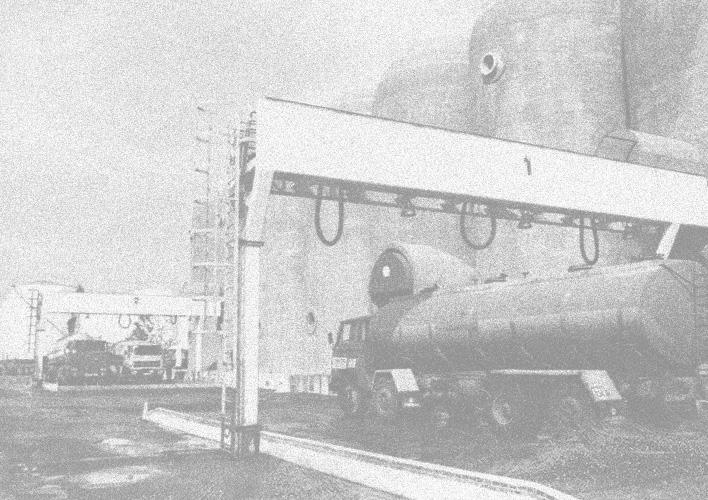BOXES
An approach to preservation by urbanization
PFG 2021
Ignacio Andrés Mejía
Prof. Matan Mayer Prof. Fernando Rodríguez Prof. Rafael Íñiguez Prof. Mónica García Prof. Juan Elvira



An approach to preservation by urbanization
PFG 2021
Prof. Matan Mayer Prof. Fernando Rodríguez Prof. Rafael Íñiguez Prof. Mónica García Prof. Juan Elvira


Faced with the dilemma of preservation or urbanization, Boxes proposes an alternative way of dealing with protected industrial patrimony. It creates a perimeter and finds its own justification for urbanization in the same act of preserving: The building, and the life happening in it, become the reason to maintain what is old intact. At the same time, what is being protected serves as the symbolic center for what is new.
The saturated perimeter around the patrimony is developed as a hybrid building that works in a continuous route along which boxes are articulated. The route serves as the organizing principle, but as an ambiguous element itself, there are no clearly defined boundaries within urban life in the building. Without recurring to complex forms, Boxes aims to find richness in the use of simple elements that when colliding create new and unexpected experiences.




Urban growth of Valencia has absorbed and integrated La Patacona into the fabric of the city. Located at the Northern edge, Patacona has looked for ways to embrace the urban condition, but the road is full of challenges.
Sorrounded by protected orchards to the North and West, and by the Mediterranean Sea to the East, Patacona must head South towards its urban destiny.











The strategy for the North-South corridor becomes that of point interventions, a massive one in this case. Like Ungers archipelago, instead of hyper-planning for the entire growth of the path, one radical intervention is proposed.
It will serve as an attractor, as the final point of the city, and a new center for Alboraya and la Patacona.


BUS 50 min. 15 min. 12 min. 45 min. 38 min.
Without significant public transport routes from the city proper to Patacona, we can assess that the North to South corridor that connects Patacona to Valencia is broken. The area therefore has sort of a peri-urban condition.

Patacona is technically not a part of Valencia, and practically not a part of Alboraya. Where does it belong? Disconnected from where it should belong, but connected to where it doesn’t, a misfit. The city doesn’t provide the necessary public equipment for it to develop, and the municipality’s equipment is separated by the orchards. Seems like Patacona is on its own, for now.




An almost too convenient geometrical situation is created.
The main North - South corridor is broken. Moblity and public transport are very poor.

At the same time, strong infrastructural boundaries (train line, highway, protected land) limit the growth of Patacona, leaving only the southern corridor open.
The development of that axis is key for the growth of la Patacona. Nevertheless, equally important is the provision of equipment and infrastructure for its independent growth.
UPV UV ALBO RAYAChaotic development around the area has resulted in a pastiche of buildings with no awareness of their sorroundings. Built for the only purpose of fulfilling their intended use, no sense of urban scale exists in the size. A reference must be established.
Short-term solutions to boost the tourist industry and catch up with metropolitan growth of Valencia has resulted in a sort of “tourist sprawl”, intensifying a peri-urban condition of self-isolated buildings without any urban commitment.
Selfish development has created a situation of anti-urbanity in which no clear morphological structure can be identified, as in the rest of the city. Self-contained constructions prolongue the exclusion of La Patacona from the city.

The bodegas Vinival is an important industrial patrimony for Alboraya and the city of Valencia, and must therefore be preserved .












An important question is the raised:

to preserve them without losing their identity, but at the same time providing a framework for urban growth in the area?
How
BOXES proposes a large building that commits Patacona on a metropolitan scale, embraces its urban condition and serves as an anchor for future development of the area . At the same time, an intervention that provides the functions that the area requires for a steady urban growth. A strong element that becomes a symbol of urbanization.

Superstudio’s model of total urbanization served as a framework to explore and speculate about different ways to interact with the existing.



Intentions, ideas and new relationships are revealed.

A building that becomes an icon of urbanization as long as its generative principles are simple and clear. An architecture of example rather than an architecture of contrast towards its context.

To establish a framework for the preservation of the industrial patrimony, while at the same time using it as a justification for a new itnervention.
To protect the existing by saturating the perimeter around it.
The existing city as the real framework of development.





The first iterations explored the potentials of a hybrid building that would contain the necessary public equipment and facilities that the area needed.



In the absence of strong contextual anchors, the building pushed to develop itself around the only existing reference: the bodegas.
The answer to the context, at least initially, was one proper to the arhcitecture of Bigness.
To enclose what is existing as a way of protecting it. The treatment of the bodegas is that of a temple.
They are left untouched, at least for now, or until a framework for their development based on more conscious needs is established.
The result is a perimetral hybrid around the existing bodegas. A building that serves the dual function of preservation and urbanization.
It urbanizes by protecting.
Following clear generative principles, the building is first conceived as several operations of stack + extrude boxes towards the outer perimeter of the enclosure.
The boxes are arranged following a loop scheme, initially for two reasons: To open views to the sea, and to address a dual condition of scales, one towards the east, where there is only a vast extensions of orchards; and one towards the inmediate west, where there is urban life.


In order to function properly, the building must be socially condensed and continuously active.
The distribution of boxes is almost like a game of programmatic tetris





The relationship between the building and its urban context is mediated by the surface. It acts as its own element, mediating transitions from the urban (exterior) to the internal part of the building, not to be confused with the interior.
Different axes connect the programs of the building with itself, but also with the city outside. Corridors cut through the surfaces, creating passages and encounters around the bodegas. Two types of paths are established: fastpaced and slow-paced.
Programmed surfaces populate the the ground floor, providing activities and bringing life to the interior of this city. This is the heart of the building, where most public life takes place, in between the industrial past and the metropolitan present.
The building, the square, is a finite element, with clearly defined boundaries. A 1.5m height plinth demarcates the space of what the possible realm of the building is. It also holds basement levels and structural function.
The structural 10x10m grid of the building influences the surface, creating a constant dialogue.


The bodegas are sorrounded with public life, the main plaza of the internal spaces of the building serves as a gathering space for the people that inhabit this small city. The plinth of the bodegas, once a solely functional element, becomes a recreational one.
An active collision of programs occurs in the north-east corner of the courtyard.

Workers play ping-pong during their lunch break, while agronomy students carry out their daily routine of gardening around the surface.

A continuous path of circulation injects a route condition to the building. The loop organizes activities, creating transitions between them, but also coliding them and blurring their boundaries at points.

The programmatic control of the building is now relinquished, the loop will serve as an articulator from now on.






One of the three main cantilever boxes of the student residences serves the main study and socializing space. Currently, the semestral beer-pong tournament is unde way, while some other students carry out group sessions in the pods nearby.
The continuity of the central hallway of the residences is broken with shared kitchens in every floor. At the same time, these moments occur at the intersections between the service cores and alternative circulation routes. The result is a constant intersection of flows in the residences. All of this in a 10m wide space.

The loop intersects the lobby for the gallery and the auditoriums with the retail areas. Two activities are currently underway, almost colliding with each other: A man plays the piano for a small group of people, while people passing by stop to check out a pop-up sale organized by Foot Locker. Meanwhile, a small exposition of the work of Richard Serra takes place at the art gallery.



“What is dumb about the box? Well, it’s actually we, when confronting it, that are able to be dumb. We know what it is. We don’t have to think about it” (Woods, 2008).


The library is housed within a three storey volume, starting in the second floor, whichcantilevers out of the main structure of the building.
The central space is an atrium filled with antural lighting with two intersectning platforms that activate the section of the box. The book shelves are arranged in the perimeter of the volume, except in the southern facade, which is left completely transparent with views of the bodega in a four storey height atrium.




1. Deep foundation and plinth with basement service level.
2. Primary precast concrete structure with structural service cores for further rigidity.

3. Primary full-height trusses assambled on site.
4. Secondary steel structure of the cantilever joined to full-height truss structure.


5. Flooring and precast hollowcore slabs are placed.
The envelope of the library showcase the different envelopes of the building: Its northern, east and west facades, which are filled with bookshelves are covered with wire mesh to protect them, while the southern facade, facing the bodegas and hiding the atrium, is covered with full height transparent glass.

The 10 m slender volume reveals its life towards the bodegas. The pure, constant perimeter towards the internal courtyard with a transparent envelope dematerializes, allowing to see the orchards below and the sea behind.
The concept of framed void reaches its peak. The masterful brickwork of the bodegas now stands out in contrast with... nothing.
The stacked section goes from hotel lobby, to bar, to terrace, to cinema, to offices. The constant flow towards the internal facade is a by-product of the loop. Here, it interacts with something as banal as a popcorn cue for the cinema aficionados.

Roof detail section. Exterior southern facade.

Curtain wall detail section. Internal southern facade

Foundations and precast column typical structure detail.

Axonometric detail section without wire mesh showcasing motorized appertures for passive ventilation.

Detail axonometric. External facade.

Detail axonometric. Internal facade.

Sustainability Strategy.







